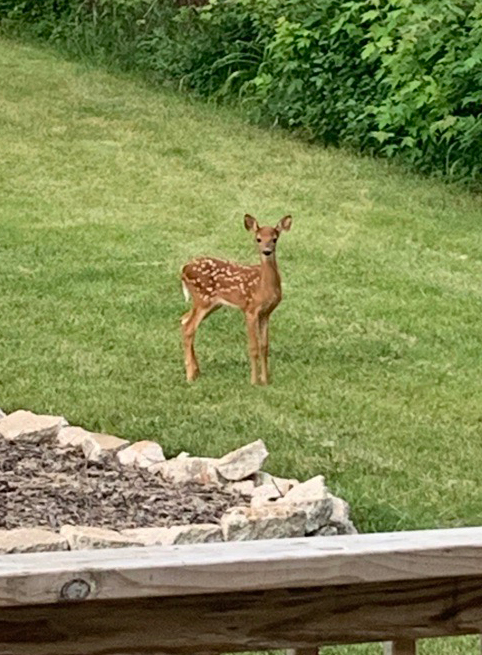An Unexpected Mindfulness Teacher
The key to being at peace is making friends with impermanence.
My Mindfulness Teacher
Several weeks ago, I looked out my window and discovered a young fawn curled up against the shed in my backyard. It was tiny and alone and it didn’t move much for several hours.
Convinced something was wrong and the fawn was about to succumb to injury, illness, or malnutrition, I called my local animal control agency to ask them to intervene—to help save it, relocate it, or remove it if it died.
The woman on the other end of the line didn’t share my urgency. “What probably happened,” she explained, “is the mother stashed her baby and will be back to feed it. She scoped out the area and decided your yard was a safe place. They’ll move on in a few days.”
I was prepared for a response of action or indifference. I was not prepared to learn there wasn’t really a problem.
I paused before I stammered, finally asking, “So what should I do?”
She didn’t hesitate and replied plainly, “Enjoy it.”
Clearly, she didn’t know who she was talking to.
There are plenty of things I’m inclined to do when confronted with an unusual or unexpected development. Learn about it, try to fix it, and worry about it? No problem. But just let it unfold in its way and in its time? Appreciate it while it’s happening? Not so much.
The fawn stayed for more than a week. Most days, I spotted it in its favorite places in the yard, where it would enjoy the morning sun or escape the afternoon heat by seeking a shady corner. I occasionally saw the mama doe hop the fence into the yard to nurse and groom the fawn.
And I heeded the advice I had been given and enjoyed every minute of it.
No amount of effort, worry, or wonder is going to stop life or freeze any moment in time.
Deer Today, Gone Tomorrow?
In addition to keeping an eye on the fawn, I used this experience to take a closer look at myself, to remember the many times I squandered the precious present moment to dwell in the past or wonder about the future. I thought about how much of life I had missed just by not being present to it.
Understanding the fawn’s time in my yard would be short kept me focused on enjoying it. I felt grateful each morning I would pull back the curtains and see it in my yard. When I caught myself wondering which would be the day it would no longer be there or wondering whether it would survive to maturity, and even whether the phenomenon would repeat next spring, I brought myself back to the moment and my gratitude for the gift in front of me.

Living in Harmony with Life
Accepting life’s impermanence is a key part of spiritual living. Change is constant. Relationships evolve … some change and others end. Children grow up, leave home, and start families of their own. Youth fades. People live and then they die. No amount of effort, worry, or wonder is going to stop life or freeze any moment in time.
The key to being at peace is to be grateful in each moment, to welcome change, and make friends with impermanence. And the best way to do that is to stay rooted in faith, in the changelessness and absolute goodness of God. The care, compassion, and wonder we feel for the things of the world have their roots in God as divine love, and that love is what sees us through the changing seasons of life.
We can’t know ahead of time what will come into our lives or how long it will stay. But we can accept it. We can welcome it. And, for the sweetest kinds of surprises, we can enjoy it.